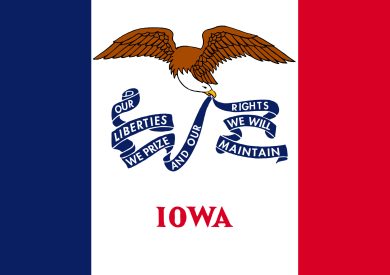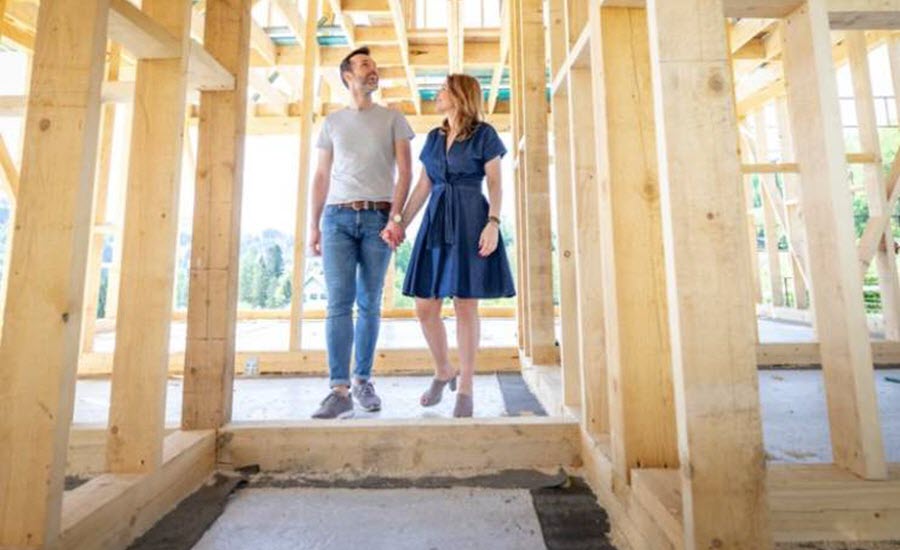
 Popular Cities For Lending in Iowa
Popular Cities For Lending in Iowa
Council Bluffs
Davenport
Des Moines
Dubuque
Iowa City
Marion
Sioux City
Urbandale
Waterloo
West Des Moines
In the Iowa real estate market, grabbing properties before your competition is essential for making the best deals. Although real estate investors sometimes go the traditional route and seek bank loans, the process is anything but speedy.
When time is of the essence, waiting for the lengthy process of getting approval is not an option for most investors. Iowa hard money lenders specialize in providing hard money loans which provide quick funds to investors. These loans are for a non owner occupied property or in some cases for business purpose loans.
Iowa Hard Money Lender FAQ’S
Below are some of the most frequently asked questions we get regarding hard money loans and lenders in Iowa.
What Do Iowa Hard Money Lenders Specialize in?
Iowa hard money lenders specialize in providing short-term, creative financing for real estate investors. If you seek a conventional lender to purchase an investment property, your loan request will be based on the property’s value and your assets. Your credit score, job, and finances will be scrutinized intensely. Hard money lenders base their final loan decisions on the after-repair value. The ARV represents the potential value of a property after all repairs have been accomplished.
What are the Benefits of Iowa Hard Money Loans?
Iowa hard money loans offer advantages that traditional banks cannot. Lenders like Acamnet Financial offer a higher level of flexibility than banks. When qualifying for this type of loan, lenders do not delve too deeply into the finances of real estate investors. In most cases, simply present the property and your plans, which saves you the hassle of gathering countless financial documents.
Do Iowa Hard Money Lenders Look at my Credit Score?
One of the greatest benefits of working with Iowa hard money lenders is the lack of credit score requirements. One of the first things a bank does is check your credit score. You can get approved for a hard money loan in Iowa even if you have bad credit or poor credit, bankruptcies, and foreclosures in the past. Iowa Hard money lenders primarily care about the property you are purchasing.
What is the Interest Rate & Points for Hard Money Loans in Iowa?
Interest rates for hard money loans in Iowa are typically higher than traditional bank loans (conventional loans) because of the greater risk lenders must take on when approving loans. When searching for a hard money lender near me in Iowa, you will find average interest rate is between 8%-15%. You should also be aware that lenders sometimes charge points that are meant to offset their administrative costs. Each point represents 1% of the total loan amount. The average points lenders charge is between 1 to 3. Some lenders may charge up to 10 points. These points are due upfront or at closing, depending on the lender.
What Should I Look for in an Iowa Hard Money Lender?
There are many benefits to working with an Iowa hard money lender. You just need to make sure you are working with the right lender. You can rely on Acamnet Financial Group when you need us most. We offer reliability, consistency, experience, and support. As a real estate investor, you know the importance of grabbing the best property deals when they become available.
How can Hard Money Lenders in Iowa Help Me?
Whether you are new to real estate and real estate projects or an old pro, you know having the capital to purchase real estate is essential. Without funds, you will miss out on real estate transactions. When you partner with hard money lenders in Iowa, you will quickly get the money you need without jumping through the hoops of traditional bank lenders.
How do I get a Hard Money Loan in Iowa?
When you want a hard money loan in Iowa, begin by preparing the property information. Location, size, purchase price, after repair value, repair costs, etc. In most cases, the financing will be based on these numbers. Then, apply for a hard money loan in Iowa using this information and supply some financial information. Then, an appraisal will be ordered to assess the loan-to-value ratio, which will influence the loan amount.
How do I Refinance an Iowa Hard Money Loan?
Refinance a Iowa hard money loan will involve moving from a high interest, short term loan to a longer term, usually lower interest rate loan. Typically a conventional type of loan. When refinancing an Iowa hard money loan you will find it will have a more stringent set of guidelines. You will need to have sufficient credit and income qualifications. As the lending landscaping and regulations constantly change, you want to consult a knowledgeable conventional loan expert.

Current Real Estate Trends In Iowa (2024)
The real estate trends in Iowa are a mix of positive and challenging factors. In April 2023, median sale prices of homes rose by 3.6%, showing that home values are growing steadily. However, the number of homes sold during the same period decreased by 21.6%, indicating that the market is slowing down. Mortgage rates have stabilized at 6.79%, which has attracted new buyers to the market. Yet, potential risks related to interest rate hikes and a housing market decline must be taken into account.
Economists forecast a potential decrease in home prices of up to 20%, signifying a possible slowdown in the housing market. Nonetheless, a market crash is not expected. The Federal Reserve’s decision to hold off on interest rate hikes has caused mortgage rates to stay low, which has made it easier for buyers to enter the market. Yet, only a small fraction of homeowners (10%) think the present time is suitable for selling, showing that sellers are being cautious.
All in all, it is expected that the Iowa housing market will go through changes, though a market crash is not projected.
Iowa Housing Market Overview
The median home price in Iowa City has seen a slight increase, going from $248,373 USD to $249,533 USD. This small rise of 0.16% could lead to a larger profit in the long run, with an estimated 12.39% growth over the next five years.
This would bring the average home price in Iowa City up to $280,441 USD by 2028. It is a clear indicator that the Iowa housing market is on a steady incline and those investing in it can expect to receive a good return on their investment.
Market Updates
Recent data in Iowa shows a tremendous increase in listings, giving buyers an abundance of options and potentially changing the balance in their favor. According to the figures, the number of listings in Iowa has skyrocketed by 162.2% in April 2023.
This influx of inventory may give buyers more control in negotiations, as well as the opportunity to explore a wider selection of properties. It is essential that buyers stay informed and make the most of this excellent market condition.
Housing Market Predictions
Experts anticipate a gradual decrease in Iowa’s housing market, with potential risks stemming from interest rate hikes and a possible market recession. Despite stability in mortgage rates and increasing buyer interest, economists have forecasted a 20% reduction in home prices.
This is due to the growing housing inventory, leading to a 3.3% year-to-year decrease in median sale prices. This suggests that caution and thoughtful consideration are necessary for both buyers and sellers of real estate in Iowa.
Sources
https://www.iowarealtors.com/news/housingstats
https://www.houzeo.com/blog/iowa-real-estate-market/
https://walletinvestor.com/real-estate-forecast/ia/johnson/iowa-housing-market#google_vignette

All About Iowa
Located in the upper Midwestern region of the United States, Iowa has a diverse geography, a transitioning economy, and a reputation for safety.
Bordered by the Mississippi River to the east and the Missouri River and Big Sioux River to the west, Iowa is surrounded by six states. The state can be divided into eight landforms ranging from loess hills in the west to steep hills and valleys in the northeast.
Historically focused on agriculture, Iowa’s economy has expanded to include advanced manufacturing, finance, biotechnology, and green energy production. The state’s population of 3.19 million people is primarily concentrated in urban areas, with counties like Dallas, Johnson, and Polk experiencing significant growth.
Iowa has also gained recognition as one of the safest states to live in, with low crime rates. The name ‘Iowa’ is derived from the Ioway people, part of the Ho-Chunk Confederation, who inhabited the region for millennia.
Overall, Iowa’s rich history, thriving economy, and picturesque landscapes make it an appealing and distinctive place to reside.
Iowa Overview
Iowa, located in the upper Midwestern region of the United States, has a diverse economy that has transitioned from agriculture to advanced manufacturing, biotechnology, finance, insurance, and government services, making it a fascinating case study of economic transformation.
Once known primarily for its agricultural industry, particularly in the Corn Belt, Iowa has successfully reduced its dependence on agriculture and diversified its economy in recent years. Today, the state is characterized by manufacturing, biotechnology, finance, insurance, and government services.
The shift in Iowa’s economy has been significant, with the state embracing new industries and technologies to drive growth and development. Advanced manufacturing, in particular, has played a vital role in the state’s economic transformation, with sectors such as machinery, food processing, and renewable energy production contributing to its success. Biotechnology has also emerged as a thriving sector, with Iowa becoming a hub for research and innovation.
Furthermore, Iowa’s finance and insurance sectors have experienced considerable growth, attracting significant companies and contributing to the state’s economic prosperity. Government services, including education, healthcare, and public administration, have also played a crucial role in Iowa’s economy.
With its diverse and evolving economic landscape, Iowa offers a unique perspective on economic transformation. By successfully adapting to changing global trends and embracing new industries, the state has positioned itself as a leader in various sectors. This economic evolution has profoundly impacted the lives of Iowa residents, creating new job opportunities and driving innovation.
As we delve into the geography and landforms of Iowa, it is essential to consider how these physical features have influenced the state’s economic development and shaped its unique identity.
Geography and Landforms
Characterized by diverse landforms shaped by glaciation, river drainage, topography, and soil composition, the geography of this Midwestern state offers a captivating tapestry of loess hills, steep valleys, and picturesque river borders. Iowa can be divided into eight distinct landforms based on these factors.
The state is adorned with unique and striking loess hills along its western border. Several hundred feet thick, these hills consist of wind-deposited silt that provides fertile soil for agriculture.
Traveling towards the northeast, one enters the Driftless Area, a region untouched by glaciers and characterized by steep hills and valleys, offering breathtaking views and challenging terrain.
Iowa’s eastern and western borders are formed almost entirely by rivers, with the Mississippi River to the east and the Missouri River and Big Sioux River to the west. Carter Lake, located west of the Missouri River, is the only city in the state situated in this region. The rivers provide natural boundaries and contribute to the state’s beauty and recreational opportunities.
These diverse landforms have played a significant role in shaping Iowa’s economy and industries. The fertile soils of the loess hills have made Iowa a prominent agricultural state, particularly in the Corn Belt. However, the state’s economy has transitioned from agriculture to advanced manufacturing, processing, finance, insurance, information technology, biotechnology, and green energy production. Iowa’s geography has provided a foundation for its economic diversification and development.
Economy and Industries
Diversifying its economic base, the state of Iowa has shifted from its agricultural roots to embrace industries such as advanced manufacturing, processing, finance, insurance, information technology, biotechnology, and green energy production. While Iowa is still known for its agricultural industry, particularly in the Corn Belt, the state has made significant strides in expanding its economic sectors.
The manufacturing industry in Iowa has seen substantial growth and has become a vital driver of the state’s economy. Advanced manufacturing, including machinery, equipment, and fabricated metal products, has become increasingly important. Iowa is also home to several major food processing companies focusing on meat processing, grain milling, and dairy production.
In addition, Iowa has developed a strong presence in the finance and insurance sectors. The state is home to several major insurance companies, including Principal Financial Group, headquartered in Des Moines. The information technology industry has also experienced significant growth, with companies specializing in software development, data analysis, and telecommunications.
Iowa has also made strides in the biotechnology field, with numerous companies involved in the research, development, and production of pharmaceuticals, medical devices, and agricultural biotechnology. The state has also embraced green energy production, particularly wind energy, with many wind farms and manufacturing facilities.
Transitioning from its agricultural past, Iowa has successfully diversified its economy, embracing manufacturing, finance, insurance, information technology, biotechnology, and green energy production. This shift has allowed the state to thrive and adapt to changing economic landscapes. With a solid foundation in these industries, Iowa has positioned itself as an innovation and economic growth leader.
Moving forward, it is essential to understand how these economic changes have influenced the population and urbanization of Iowa.
Population and Urbanization
The demographic landscape of Iowa has experienced significant shifts due to economic changes and urbanization, leading to growth and decline in different regions of the state. According to the 2020 census, Iowa has a population of 3,190,369, making it the 31st most populous state in the United States. The capital and largest city of Iowa is Des Moines.
Urban areas in Iowa are home to 61% of the state’s population, while rural areas have seen a population decline. From 2000 to 2008, metropolitan counties in Iowa experienced an 8.5% population increase, while rural counties declined by 4.2%.
The population growth has been observed in more urbanized counties such as Dallas, Johnson, Linn, Polk, and Scott. These areas have seen an influx of residents due to the presence of industries like manufacturing, biotechnology, finance, insurance, and government services. On the other hand, rural areas have been experiencing a decline in population as agriculture, which was once the backbone of Iowa’s economy, has become less prominent.
The shift towards urbanization and the diversification of the economy have contributed to the changing demographic patterns in Iowa. As the state continues to evolve, it is vital to understand the historical context and factors that have shaped its population. By exploring the history and statehood of Iowa, we can gain a deeper understanding of the state’s development and the challenges it has faced along the way.
History and Statehood
Iowa has undergone significant changes and challenges throughout its history, ultimately achieving statehood on December 28, 1846. The early settlement of Iowa was driven by pioneers from Kentucky and Virginia who migrated along the Mississippi River. They established towns such as Dubuque and Bellevue.
In 1838, the U.S. Congress established the Territory of Iowa, with Robert Lucas appointed the first governor. Eight years later, on December 28, 1846, Iowa became the 29th state in the Union.
Iowa’s journey toward statehood had its share of difficulties. The state experienced conflicts with Indigenous tribes and the effects of the War of 1812. The United States encouraged settlement on the east side of the Mississippi River and the removal of Indigenous tribes to the west. The Sauk, Meskwaki, Ho-Chunk, and Dakota tribes were forced out of Iowa by the U.S. Federal Government.
After achieving statehood, Iowa’s population grew rapidly, fueled by agricultural expansion and the aftermath of the Civil War. The state became known for its agricultural industry, particularly in the Corn Belt. However, as the 20th century progressed, Iowa’s economy diversified, shifting towards manufacturing, biotechnology, finance, insurance, and government services.
Today, Iowa continues to face challenges and adapt to changing economic and social landscapes. Its population growth has been slower than the national average, and the state has a predominantly urban population. Despite these challenges, Iowa remains an essential and vibrant state with a rich history and a diverse economy that contributes to the overall fabric of the United States.


 Popular Cities For Lending in Iowa
Popular Cities For Lending in Iowa